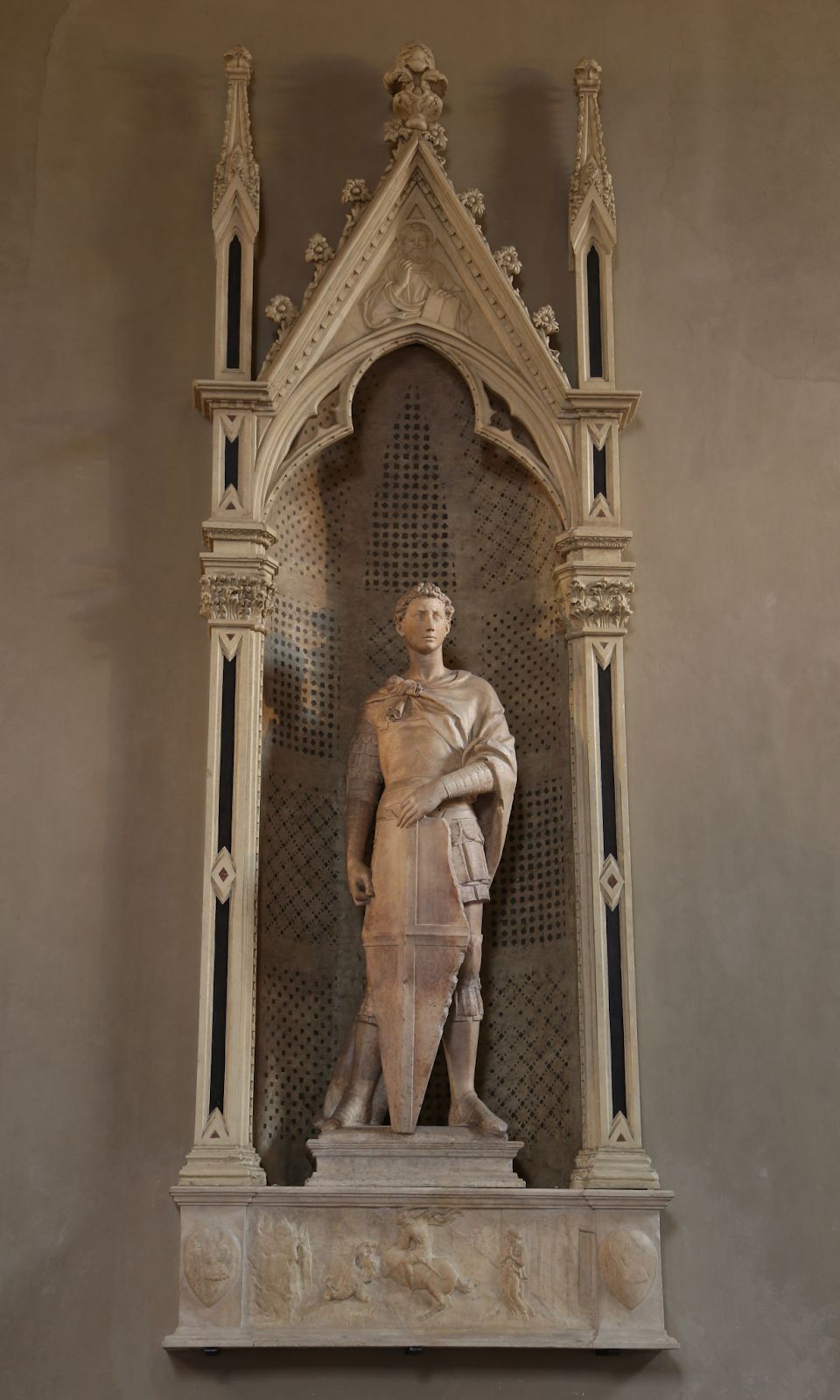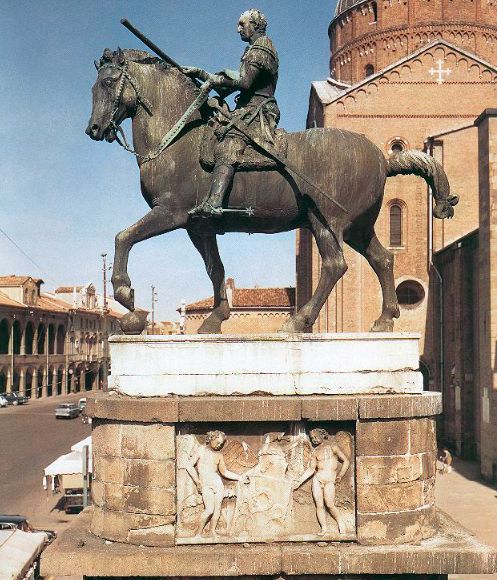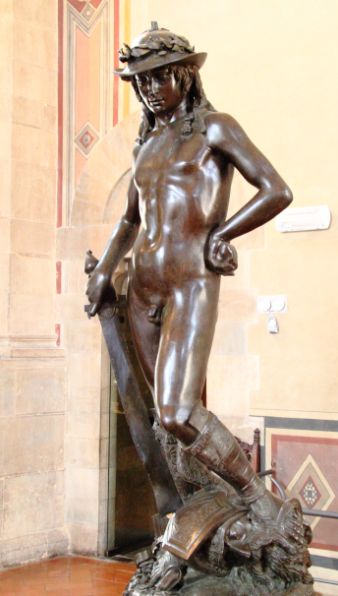During the Renaissance, Italian sculptor Donatello (Donato di Niccolò di Betto Bardi, 1386-1466) had a profound impact on European art. He began his career in the workshop of Lorenzo Ghiberti in Florence, contributing to the creation of the bronze doors of the Florence Baptistery. After a brief period as an assistant, Donatello soon established himself as an independent artist.

Donatello's sculptures encompassed various forms, from freestanding statues to low reliefs. His early works were often designed for architectural settings, such as niches. However, his design of "St. George" (circa 1415-1417) showcased his innovative approach: the statue protrudes from a shallow niche, almost becoming a freestanding sculpture. This statue has since been moved to a museum, with a replica placed in its original location.

Due to the limitations of materials and the demand at the time, there were few commissions for large freestanding statues in early 15th-century Italy. However, Donatello was commissioned to create a bronze equestrian statue in Padua, depicting the mercenary captain Erasmo da Narni, known as "Gattamelata" (circa 1445-1450). This statue, which stands 3.4 meters high and 4 meters wide, is located in the Piazza del Santo in Padua. In this sculpture, Donatello drew inspiration from the Roman "Equestrian Statue of Marcus Aurelius" and the four bronze horses of St. Mark's Basilica in Venice, infusing his work with new vitality and dynamism.

Donatello also demonstrated his talent in his relief sculptures. His works for the Basilica of St. Anthony in Padua exhibited his mastery of linear perspective and narrative art. His bronze relief "The Lamentation of Christ" (circa 1460-1466) in the Basilica of San Lorenzo in Florence is renowned for its intense emotional expression and complex composition. The grief of Christ’s mother and followers is vividly portrayed through their expressions and postures, with the overall composition depicting the chaotic sorrow of the mourners.

Donatello’s detailed depiction of the human form is evident in works like "David", showcasing his deep understanding of human anatomy and keen sensitivity to human emotions. "David" is the first freestanding nude statue of the Renaissance, depicting the young David after his victory over Goliath. This statue, about 158 cm tall, is housed in the Bargello Museum in Florence.
Donatello's influence extended beyond Italy, impacting sculpture throughout Europe. His creative spirit and artistic pursuits set a standard for future sculptors. His works not only inherited the classical traditions of Greek and Roman art but also introduced new artistic ideas and techniques, elevating sculpture to new heights during the Renaissance.